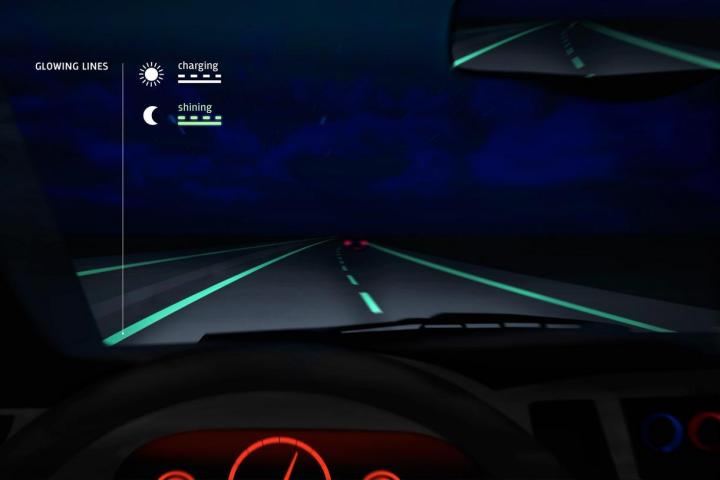
Glow in the dark roads sound like science fiction, and unfortunately, at least for the moment they are being banished back into that realm. An experiment in the Netherlands – include your own ‘Amsterdam’ joke here – with self illuminating roads has been shelved for the time being, because the lines don’t hold up to high degrees of moisture.
The pilot road, a highway southeast of Amsterdam, is now being phased out. Apparently the phosphorescent powder used in the lines is sensitive to moisture producing inconsistent lighting. Any product rollout is fraught with problems, and you conduct tests like this precisely to find out what will go wrong. But come on … water? It seems like that one should have been foreseeable in a country below sea level.
Moisture mischief aside, Heijmans, the company behind Glowing Lines, remains confident that the problem can be addressed. Heijmans told the BBC: “We will use these insights to introduce an update to the Glowing Lines 2.0 version … As planned we are working on developing Glowing Lines version 2.0, which will be ready for this summer. It will then be introduced on a larger scale in the Netherlands and abroad.”
I hope they are successful, and not only because the idea is cool. There are some distinct advantages to phosphorescent road markings.
The big one being touted by Heijmans and designer Daan Roosegaarde, is energy savings. Lighting massive stretches of road with lamps is not exactly cheap – or green. Not only that, but the glow-in-the-dark markings have the potential to provide other useful information. Roosegaarde hopes to employ temperature sensitive paint that will display warnings to drivers when the temperature drops below freezing.
So let’s hope that Glowing Lines 2.0 goes smoothly, and that they remember to waterproof it this time.


